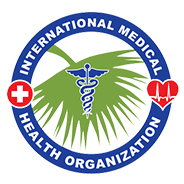
Vocational Training for Special Needs Children
Northern Province, Sri Lanka
The Need
SEED, Social Economical and Environmental Developers was formed in Vavuniya in 1996, mainly to deal with war affected people in the North and East of Sri Lanka. SEED discovered that there was a high percentage of special needs children among them. In the year 2000, a school with 7 of these children with special needs was formed and today, it has evolved into a highly successful school with 70 such children enrolled.
As of 2017 SEED required funding to make the building more accessible to all children with special needs. We acknowledged that making the school more wheelchair accessible was the baseline to developing inclusive learning for children in Northern and Eastern provinces.
The Solution
The solution to fostering an environment of understanding and accessibility for children with special needs, is to create a safe space where their disabilities do not inhibit their chances at growth. The SEED Empowerment Campus has already done wonders in accessible learning by incorporating lipreading and sign language in daily teaching, but disability comes in many forms and likewise the aid for the disabled also comes in different forms.
IMHO partnered with SEED in 2017 to acknowledge the issue of wheelchair accessibility by proposing to build a wheelchair friendly path from the school gate to the building and installing handrails on the wheelchair ramps.
Resources
SEED reached out to IMHO for support on the vocational training center for special needs children project. IMHO enthusiastically responded with financial support for both the pathway project that was approximated to be $2,750 and the railway installation which was estimated to be $2,420. SEED requested approximately $5,170 to promote the independence and privacy of wheelchair bound people, allowing children the right to experience school without the inhibitions of their disabilities. We often take for granted how easily we can enter a room or how little trouble we have getting from place to place, unfortunately not everyone has the same privilege that we have, and it is our duty to acknowledge that. The dirt covered grounds of the campus makes it even more difficult for students with mobile disabilities, IMHO’s funding towards greater accessibility allows us to focus on what disabled students can accomplish, as opposed to what stops them.
Impact
Direct Impact
Benefits the 70 students in attendance at the school
Building a wheelchair accessible path from the gate to the building and installing railings to the wheelchair ramps directly benefited the students of the SEED Empowerment Campus. The students have access to a building that promotes their welfare and education without the obstacle of discrimination. The tools implemented by the school also minimizes the difficulties on the caretakers of the students, by promoting independence. Students no longer need to rely on their parents and guardians for mobility, not only increasing their own confidence in their abilities but diminishing the worries of those around them.
Indirect Impact
Benefits the parents and guardians of the students
This project directly supports the fourth and tenth sustainable development goal (SDG4, and SDG10) implemented by the United Nations. The main purpose of this school and project was to promote inclusivity and equal opportunity for all children which aligns perfectly with SDG4. The school also promotes SDG10 by getting rid of obstacles, allowing all children to be placed on an equal playing field, students should never feel restricted in their education because of a disability. The school also offers an example of equality to the community, who have the opportunity to learn about the benefits of wheelchair accessibility and implement the same principles around the rest of Vavuniya.
Reversed land degradation from war and migration in recent years.
Increased agricultural opportunities and sustainable living for underserved communities in the area.
# of people directly benefited
# of people indirectly benefited




